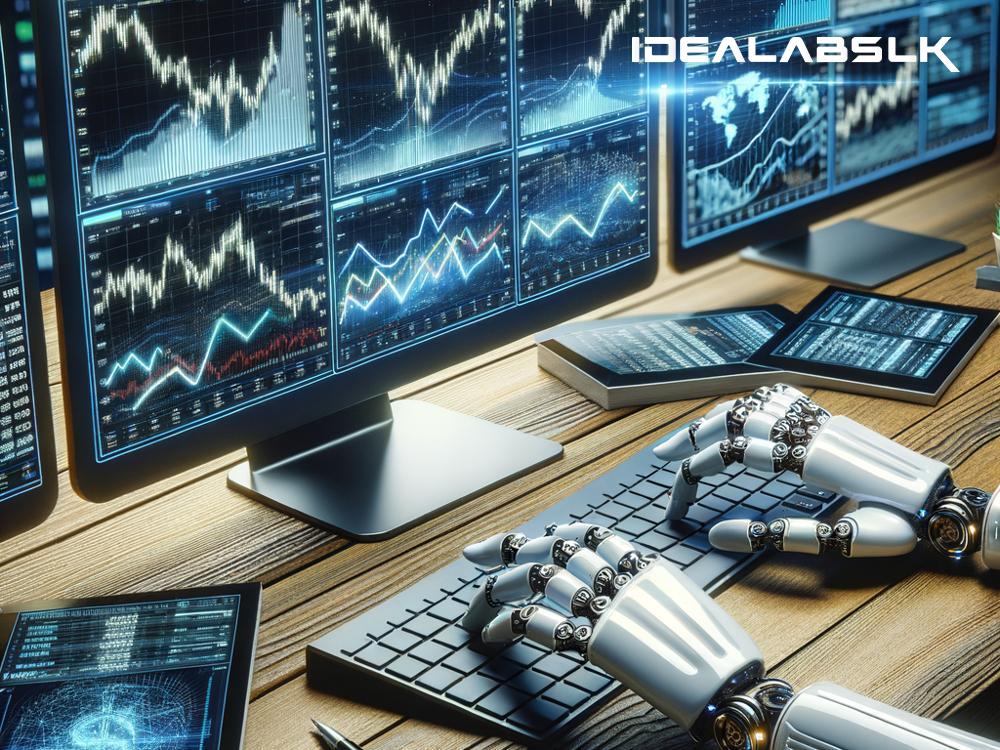AI for Trading: Simplifying the Complex World of Algorithmic Trading with Machine Learning
In the fast-paced world of trading, where milliseconds can mean the difference between profit and loss, the use of Artificial Intelligence (AI), particularly Machine Learning (ML), is revolutionizing how trades are executed and strategies are developed. Gone are the days when trading was solely the domain of Wall Street experts with nerves of steel, constantly glued to multiple screens. Today, AI has democratized trading, making it more accessible, efficient, and, most importantly, more profitable. So, let's break down this complex topic into simpler terms and understand what role AI plays in the mysterious world of algorithmic trading.
What is Algorithmic Trading?
In the simplest terms, algorithmic trading involves using computer algorithms to execute trades at speeds and volumes no human could. These algorithms follow a set of predefined instructions for placing trades to generate profits at a speed and frequency that is beyond human capability. It's like having a super-fast, super-smart robot that knows exactly when to buy or sell stocks, commodities, or currencies.
Enter Machine Learning: The Brain Behind the Robot
Machine Learning, a subset of AI, is where the magic really happens. It allows these trading algorithms to learn from past data and improve over time. Instead of being explicitly programmed to execute specific tasks, ML algorithms can analyze vast amounts of market data, identify patterns, and make predictions about future market movements based on historical trends. This is akin to giving your super-fast trading robot a brain that gets smarter with experience.
How Does Machine Learning Enhance Algorithmic Trading?
-
Predictive Analysis: ML algorithms can sift through millions of data points from various sources, such as social media, news updates, financial reports, and market data, in real-time. They can detect subtle patterns and predict market trends before they become obvious to human traders. This predictive capability can significantly enhance the accuracy of trading strategies.
-
Adaptive Learning: The financial markets are notoriously volatile and unpredictable. What worked yesterday might not work today. ML algorithms are excellent at adapting to new data; they constantly learn and adjust their strategies according to the latest market conditions, ensuring that the trading strategy evolves with the market.
-
Risk Management: Managing risk is an essential aspect of trading. ML can analyze historical data and simulate various market scenarios to identify potential risks and devise strategies to mitigate them. This allows traders to maximize returns while minimizing losses.
-
High-Frequency Trading (HFT): This is a form of algorithmic trading that uses powerful computers to transact a large number of orders at extremely high speeds. Machine learning enhances HFT by analyzing market conditions in real time and executing trades at the optimal moment, ensuring the best possible outcome.
-
Automated Decision Making: Perhaps the most significant advantage of ML in trading is the ability to automate decision-making processes. By analyzing data and predicting trends, ML algorithms can make informed trading decisions without human intervention, making the trading process more efficient and less prone to human error.
Is Machine Learning in Trading Foolproof?
While the integration of ML in trading has undoubtedly created more opportunities for success, it's important to remember that no system is foolproof. Market conditions are influenced by an array of unpredictable factors, including political events, natural disasters, and changes in government policies. While ML algorithms can learn and adapt, they are not infallible and can be affected by bias or errors in the data they are trained on.
The Future of Trading
The future of trading undoubtedly lies in the integration of more advanced AI and ML technologies. As these algorithms become smarter and more sophisticated, we can expect trading strategies that are not only more profitable but also more robust and capable of managing risks more effectively. However, it's also crucial for traders to remember the ethical considerations and potential risks associated with automated trading systems and strive for a balance between leveraging technology and maintaining a human oversight.
Conclusion
AI and Machine Learning are transforming the landscape of algorithmic trading, making it faster, smarter, and more efficient. The ability of ML algorithms to learn from data, predict market trends, manage risks, and make automated decisions can significantly enhance trading strategies. However, like any technology, it's not without its challenges and risks. As we move forward, the combination of human expertise and AI's capabilities will likely shape the future of trading, making it more accessible and profitable for traders around the globe.

